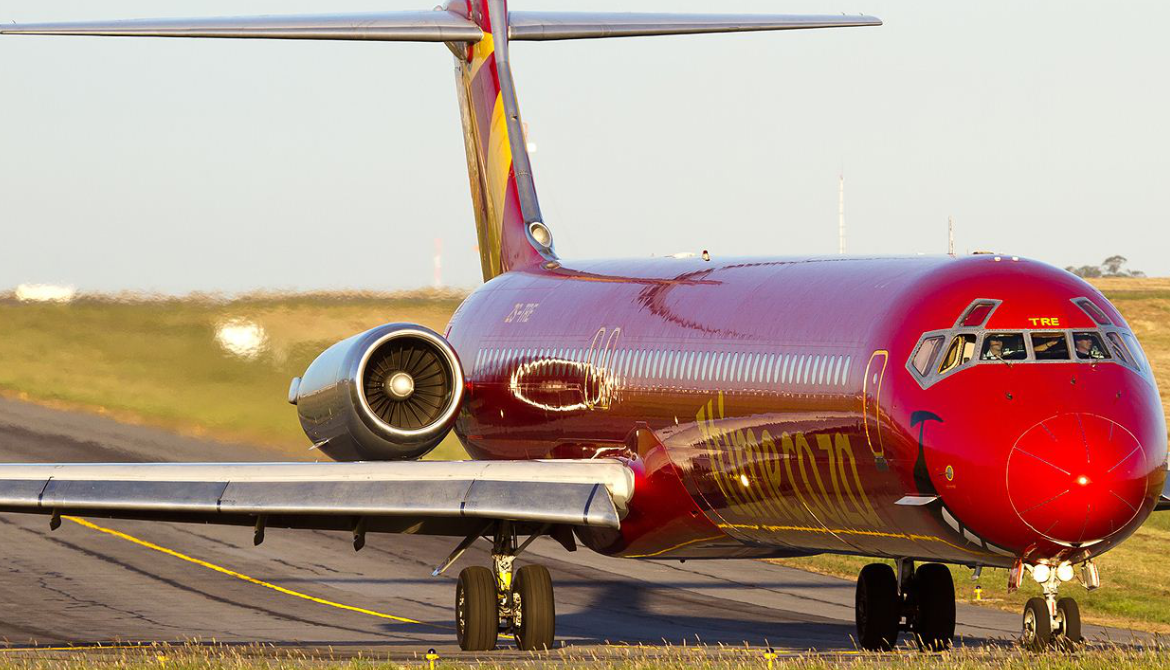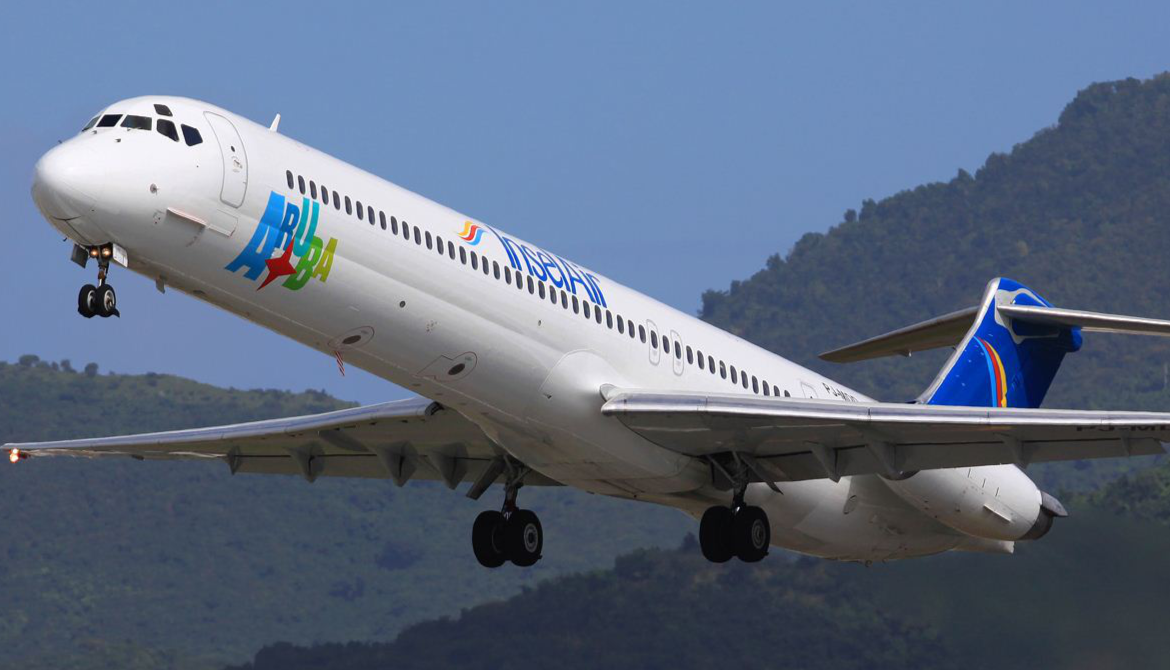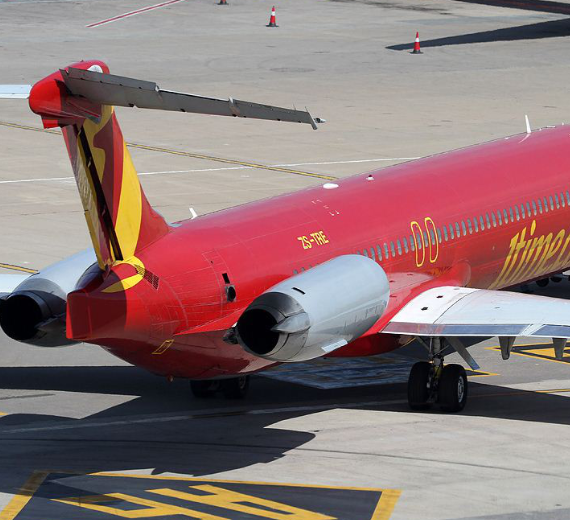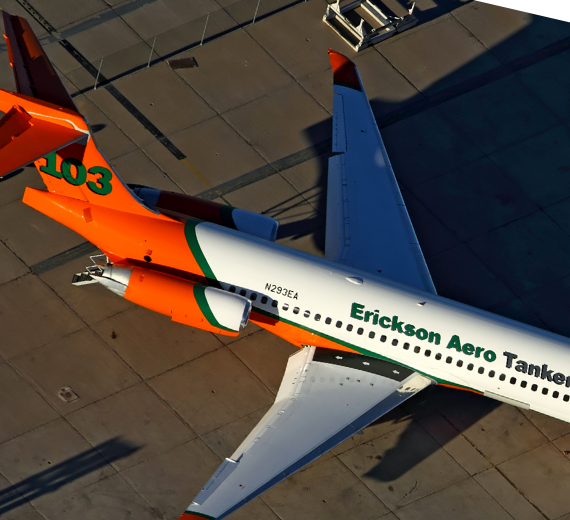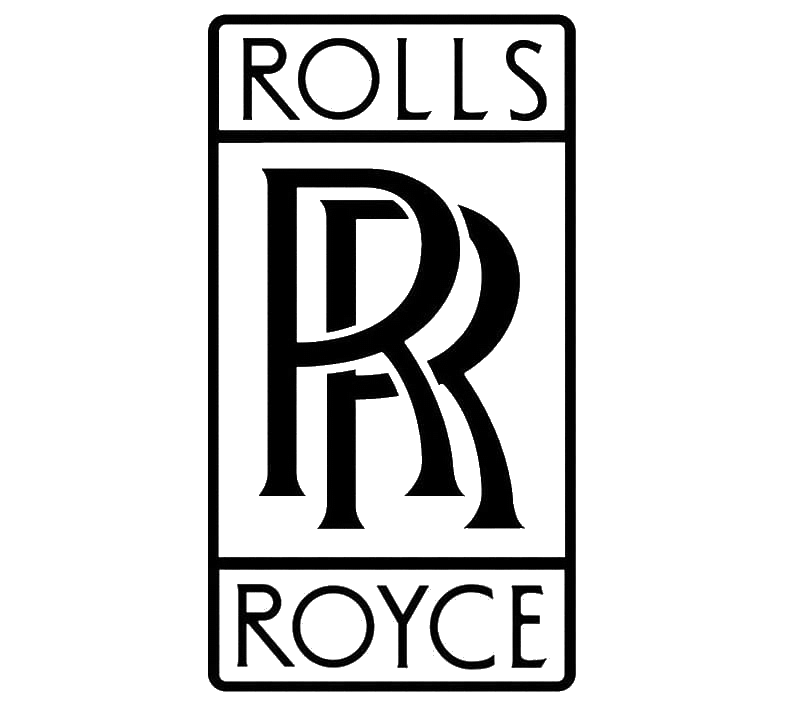Douglas
DC-9 narrow-body
Role Narrow-body jet airliner
National origin United States
Manufacturer Douglas Aircraft Company
McDonnell Douglas (from Aug. 1967)
First flight February 25, 1965
Introduction December 8, 1965, with Delta Air Lines
Status In limited service for cargo transport and private use
Primary users USA Jet Airlines
Aeronaves TSM
Everts Air Cargo
Northwest Airlines (historical)
Produced 1965–1982
Number built 976
Variants McDonnell Douglas C-9
Developed into McDonnell Douglas MD-80
McDonnell Douglas MD-90Boeing 717
.
History
Douglas
DC-9 narrow-body

The McDonnell Douglas DC-9 is an American five-abreast, single-aisle aircraft designed by the Douglas Aircraft Company. It was initially produced as the Douglas DC-9 prior to August 1967, after which point the company had merged with McDonnell Aircraft to become McDonnell Douglas. Following the introduction of its first jetliner, the high capacity DC-8, in 1959, Douglas was interested in producing an aircraft suited to smaller routes. As early as 1958, design studies were conducted; approval for the DC-9, a smaller all-new jetliner, came on April 8, 1963. The DC-9-10 first flew on February 25, 1965, and gained its type certificate on November 23, to enter service with Delta Air Lines on December 8.
During the late 1950s, Douglas Aircraft studied a short- to medium-range airliner to complement their then-sole jetliner, the high-capacity, long-range DC-8 (DC stands for Douglas Commercial)] The Model 2067, a four-engined aircraft sized for medium-range routes was studied in depth, but work on it was abandoned after the proposal did not receive enough interest from airlines. In 1960, Douglas signed a two-year contract with the French aeronautics company Sud Aviation for technical cooperation; under the terms of this contract, Douglas would market and support the Sud Aviation Caravelle and produce a licensed version if sufficient orders were forthcoming from airlines. However, none were ever ordered from the company, leading to Douglas returning to its design studies after the co-operation deal expired.
n 1962, design studies were underway into what would become the DC-9. The first envisioned version seated 63 passengers and had a gross weight of 69,000 lb (31,300 kg). This design was changed into what would be the initial DC-9 variant. During February 1963, detailed design work commenced. On April 8, 1963, Douglas announced that it would proceed with the DC-9. Shortly thereafter, Delta Air Lines placed the initial order for the DC-9, ordering 15 aircraft along with options for another 15. By January 1965, Douglas had garnered orders for 58 DC-9 as well as options for a further 44.
Unlike the competing but larger Boeing 727 trijet, which used as many 707 components as possible, the DC-9 was developed as an all-new design. Throughout its development, Douglas had placed considerable emphasis placed on making the airliner as economic as possible, as well as to facilitate its future growth. The adoption of the Pratt & Whitney JT8D low-bypass turbofan engine, which had already been developed for the Boeing 727, enabled Douglas to benefit from the preexisting investment. Pratt & Whitney had long collaborated with Douglas on various projects, thus their engine was a natural choice for the company. In order to reduce the considerable financial burden of its development, Douglas implemented one of the first shared-risk production arrangements for the DC-9, arranging for de Havilland Canada to produce the wing at its own financial cost in return for promises on prospective future production orders0
KmCeiling
0
KmCombat RANGE
0
Km/hAircraft Speed
0
Max Crew
Photo Gallery
Douglas DC-9 narrow-body


Douglas DC-9 narrow-body
General Info
-
-
-
Crew2Passengers80 / 90, max. 139
Wing Span 28,45 m 93 ft 4 in Wing Area 93,0 m² 1001 ft² Length 40,72 m 133 ft 7 in Height 8,53 m 27 ft 12 in
-
Crew2Passengers80 / 90, max. 139
-
Powerplant
-
Empty Weight 29.336 kg 64.675 lbs max. Takeoff Weight 54.885 kg 121.000 lbs max. Landing Weight 49.895 kg 110.000 lbs -
-
Propulsion 2 Turbofan Engines Engine Model Pratt & Whitney JT8D-17A Engine Power (each) 71,2 kN 16000 lbf
-
-
Performance
-
Speed 898 km/h 485 kts 558 mph Service Ceiling 10.668 m 35.000 ft Range 2.632 km 1.421 NM1.635 mi.
Aircraft of comparable role
.
Links to Youtube & Others
The DC-9 series, the first generation of the DC-9 family, would become a long term commercial success for the manufacturer. However, early production of the type had come at a higher unit cost than had been anticipated, leading to DC-9s being sold at a loss.
Douglas
DC-9 narrow-body
During the late 1950s, Douglas Aircraft studied a short- to medium-range airliner to complement their then-sole jetliner, the high-capacity, long-range DC-8 (DC stands for Douglas Commercial).
Youtube Link
Two further developments of the original or first generation DC-9 series used the new designation with McDonnell Douglas initials (MD- prefix) followed by the year of development.



